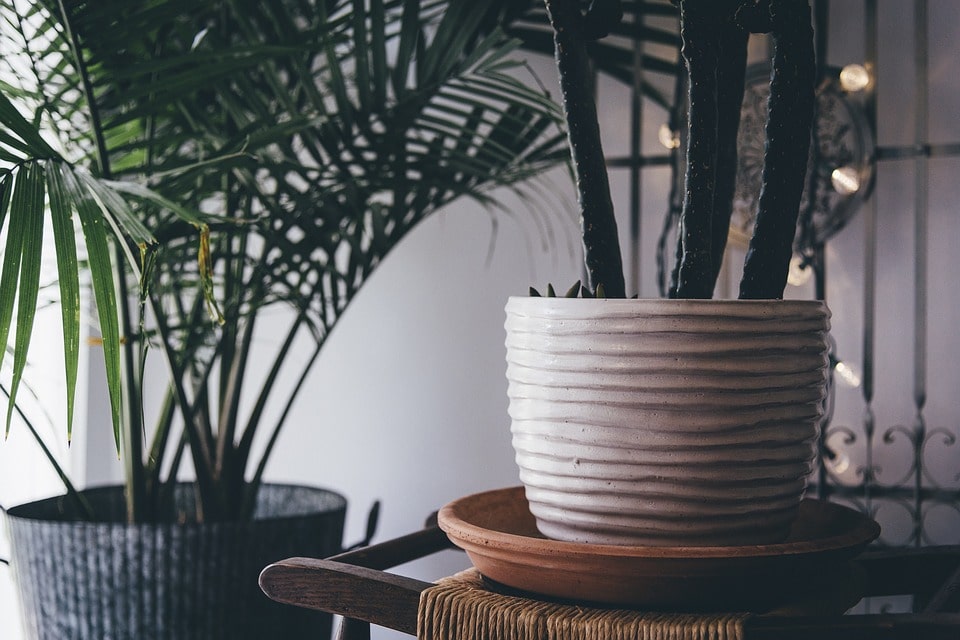
Using plants to purify indoor air. That’s every homeowner and interior lover’s dream come true. Plants give your home a natural and grounded appeal and there’s the added benefit of them cleansing the air. Air purifying plants just work!
Or do they?
Can plants actually have a positive effect on indoor air quality?
Is there really any difference between normal plants and air purifying plants?
And can you rely on just plants to purify your indoor air?
Well, the short answer is ‘no’ to all those questions. Read on to find out the more nuanced answer if you’re serious about taking control of your home environment.
Here at Pollutionsolution.in, we try every day to address such questions and that’s why we have created this guide on the best air purifier plants in India for you. We’ll be covering all aspects regarding plants and their air purifying effects (if any).
Feel free to jump into the navigation menu to the section of your choice. But before we get into the nitty-gritty, let’s try to understand how this talk of ‘air purifying plants’ got started in the first place.
- “NASA Approved Air Freshner Plants”: How It All Started
- Will Air Purifier Plants in India Work?
- Air Purifying Plants vs. Air Purifiers
- 7 Best Air Purifying Indoor Plants with Names
“NASA Approved Air Freshner Plants”: How It All Started
In the late 20th century, the trend was to design buildings in an air-tight and completely sealed manner.
This was done to maximize insulation to minimize the cost of heating.


However, soon it was found that the people in those buildings started feeling sick and suffering from a variety of symptoms as a result of simply being in the building for a long period of time.
This was known as the ‘sick building syndrome’.
In 1989, NASA conducted their ‘clean air study’ to counter the effects of deteriorating air quality in these sealed buildings. The study spanned two years and gave birth to the idea of “plants recommended by NASA” or “NASA approved plants for purifying air”.
In the study, plants were kept in sealed chambers and subjected to high levels of namely 3 chemicals in the air. These chemicals were benzene, formaldehyde, and trichloroethylene.
The researchers documented the percentage of these chemicals that were eliminated from the air after every 24 hours. After measuring and comparing the results between many plants, NASA concluded that 18 plants were most effective at filtering out chemicals from the air and thus improving indoor air quality.
Will Air Purifier Plants in India Work?
So, if NASA did conclude that certain plants were effective at removing VOCs from the air then why are we all not using them?
The question of using plants to purify indoor air again came into scrutiny when scientists revisited and studied again the air cleansing effect of the plants prescribed by NASA.
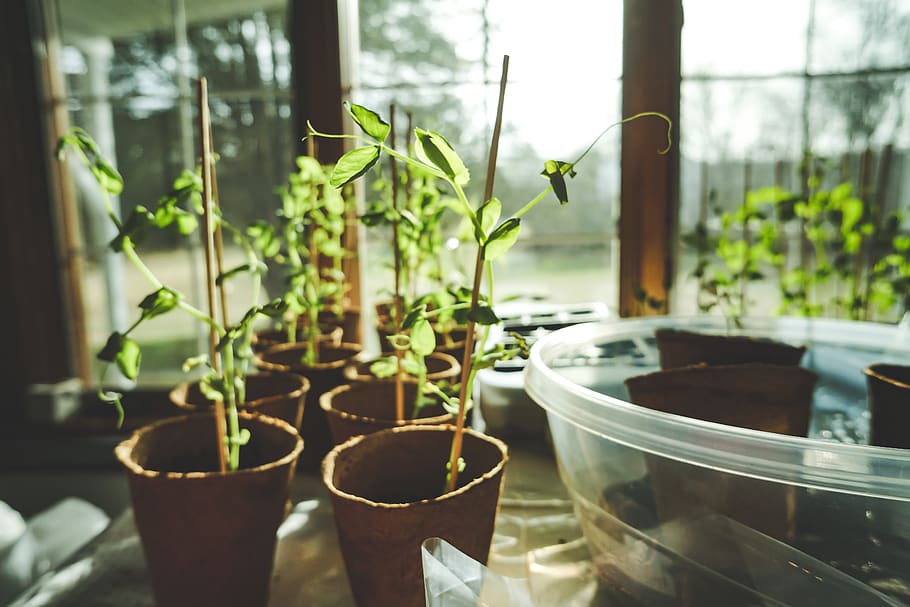

What they found was that even though the plants did a good job of removing VOCs from the air, they had very little to no effect on the air quality when the conditions were moved from the laboratory to real-life home or office building setup.
Let’s understand why that happened.
In the laboratory setup, the plants were kept in a sealed chamber and a fan was used to circulate air. In a real-world scenario, it does not work like that.
Rarely is a building sealed a hundred percent and there are regular exchanges between the outside and indoor air. In fact, scientists predict that the entire indoor air of a room can be swapped with outside air with just one instance of the door opening.
Another reason for the lab results not replicating directly is that in the lab the plants were kept in ideal conditions. This means that they were exposed to plenty of UV light that is responsible for the process of photosynthesis.
Since the process of photosynthesis is directly responsible for enabling the exchange of gases between the plants and their surroundings the rate of photosynthesis in a plant is the critical determinant of its air-purifying capabilities.
However, indoor plants often are found in less-than-ideal conditions because of the lack of adequate light. While the light is just enough for the plants to stay alive it does not translate to a high rate of photosynthesis. That’s why the air-purifying capabilities of plants studied outside the lab setup were found low.
Another factor to be kept in mind is that for indoor plants to have any significant effect on the air quality the density of the plants in the home has to be high.
NASA scientists studying this, claim that at least 2-3 potted plants be kept for every 100 square feet of space. Maintaining this kind of plant density is highly unfeasible for most of us, given the minimalistic conditions of modern life.
Air Purifying Plants vs. Air Purifiers
Perhaps the most critical question that remains after reading all this is how well do air freshener plants compare to the best air purifiers for home in India when it comes to cleaning the indoor air.
After all, on our limited budgets, we can either buy a standard air purifier or invest in house plants.


Well, for a decent and fair comparison the results of the studies concerning air-purifying plants were converted to CADR (clean air delivery rate) and the results were compared to the effects of standard air purifiers.
Many studies found that the effect of air-purifying plants on the indoor air is negligible when compared to the effect of air purifiers.
A meta-study of all these various studies categorically stated that potted plants do not improve air quality. Even NASA, while it grows plants on space stations claims that it does so for fresh food and ‘to create a beautiful atmosphere’.
Perhaps we should put our hard-earned money towards a decent air purifier when it comes to taking care of indoor air quality and rely on plants to create a beautiful and enlivening space too.
7 Best Air Purifying Indoor Plants with Names
After all that being said, if you do have your heart set on bringing home some green goodness, it would definitely not hurt to go for some tried and lab-tested oxygen air purifying indoor plants with names.
Here are the top air-purifying plants that NASA recommends to improve air quality:
Spider Plants
There are over 200 varieties of this easy-to-grow house plant.
It is really easy to care for this plant as it requires watering only 2-3 times a week and a moderate amount of light.
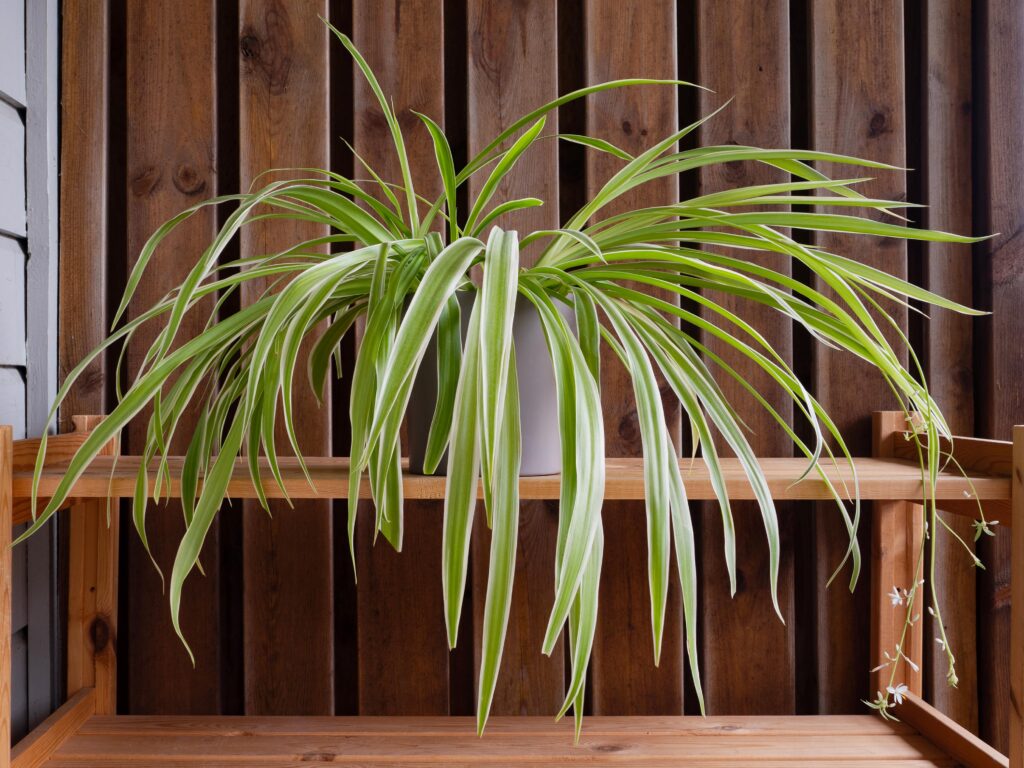

It is very forgiving of conditions and looks great hanging in baskets or even in planters. When the conditions are ideal, it gives out beautiful white blossoms.
This plant eliminates formaldehyde and xylene from the air.
Dracaenas
This is a broad category of plant species and the most well-known variety is known as the ‘song of India’.
It is relatively easy to care for and comes in many different shapes and colors.
The most common is the variegated variety with long thin leaves. It can grow up to 3-6 feet given the right conditions but will happily sit in a small planter too.
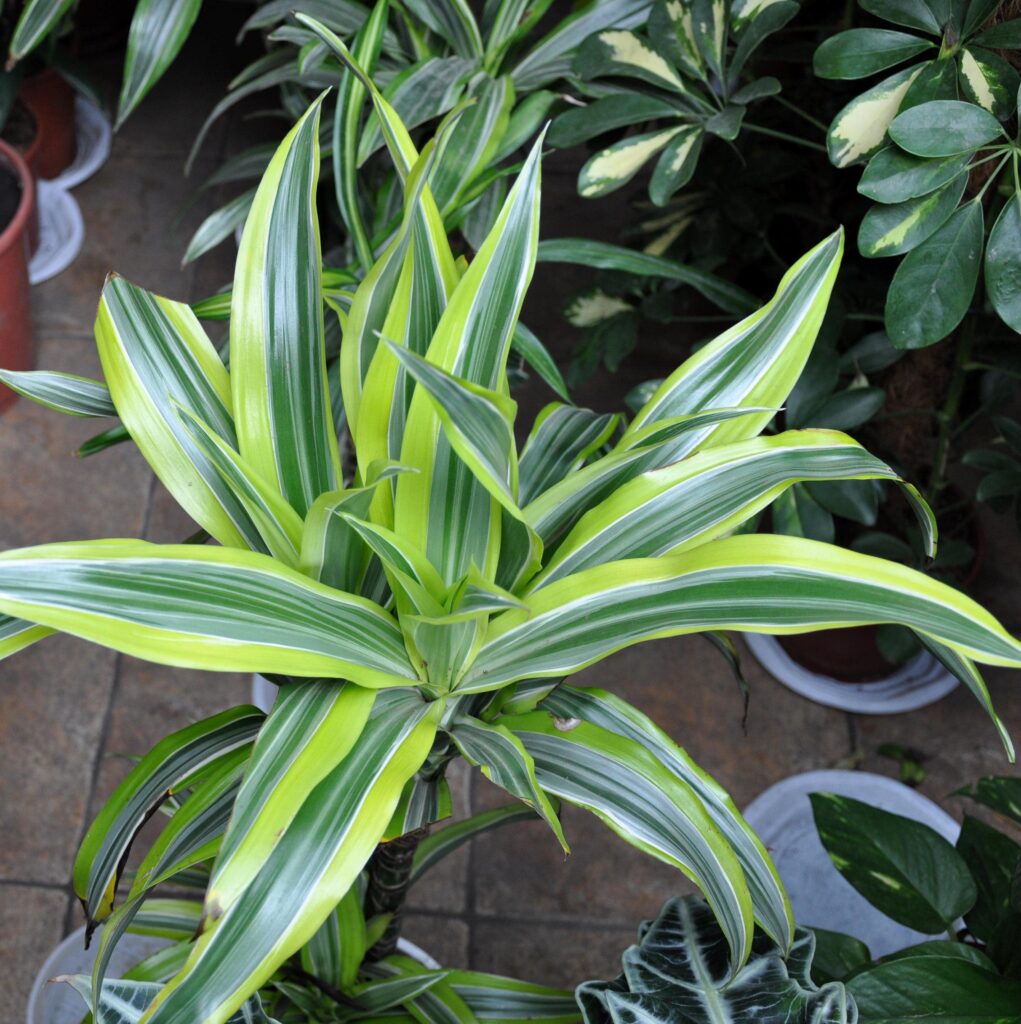

This plant likes humidity and moderate indirect light. The only thing to watch out for is signs of root rot if over-watered, but planting it in well-draining soil will easily fix that.
It eliminates formaldehyde, xylene, toluene, and benzene from the air.
Golden Pothos
Widely known as devil’s ivy or even money plant, this plant signifies luck and fortune.
It is one of the most forgiving plants you can find and adapts to most conditions quite readily.
Just give it a little care and you will see beautiful tendrils and trails sprout in no time.
Once it adapts to its conditions it does require some pruning, though.
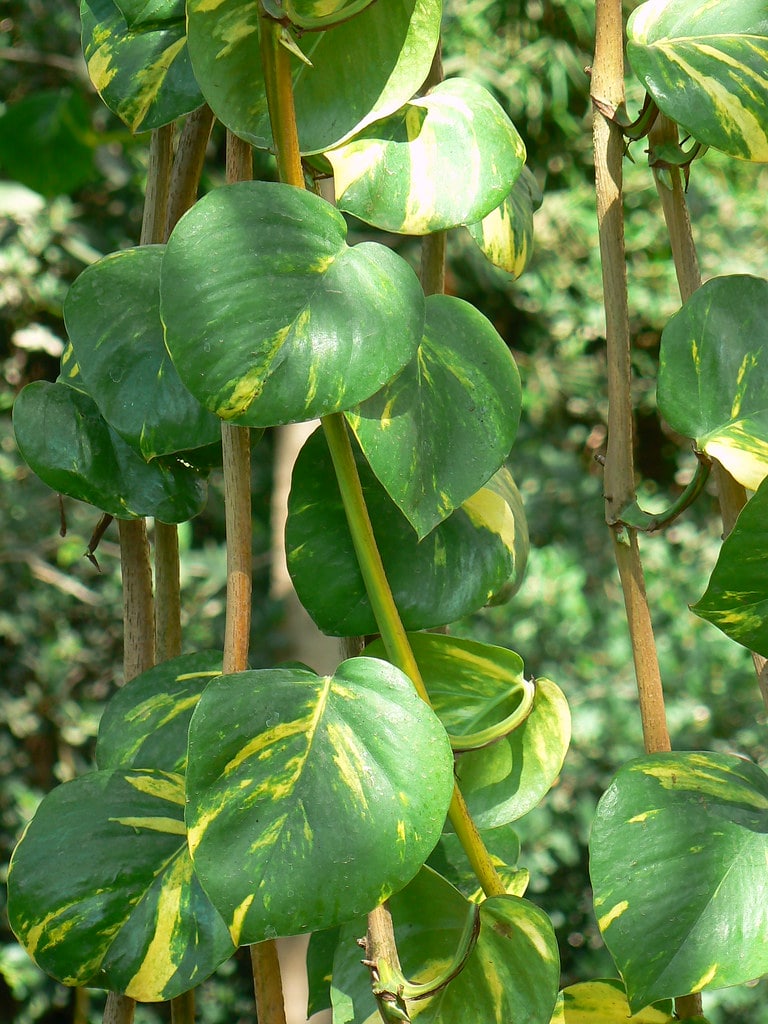

In fact, as long as you make sure to not overwater it and it’s near indestructible.
It eliminates formaldehyde, xylene, toluene, carbon monoxide, and benzene from the air.
Areca Palms
Areca palms are everywhere, and for a very good reason too.
This plant is an excellent air purifier but the most attractive features are its evergreen foliage that lends a tropical feel to any space.
Once this plant has adapted to its conditions it can grow up to 6-8 feet tall.
Just place it next to a big window that receives plenty of sunlight and watch it grow.
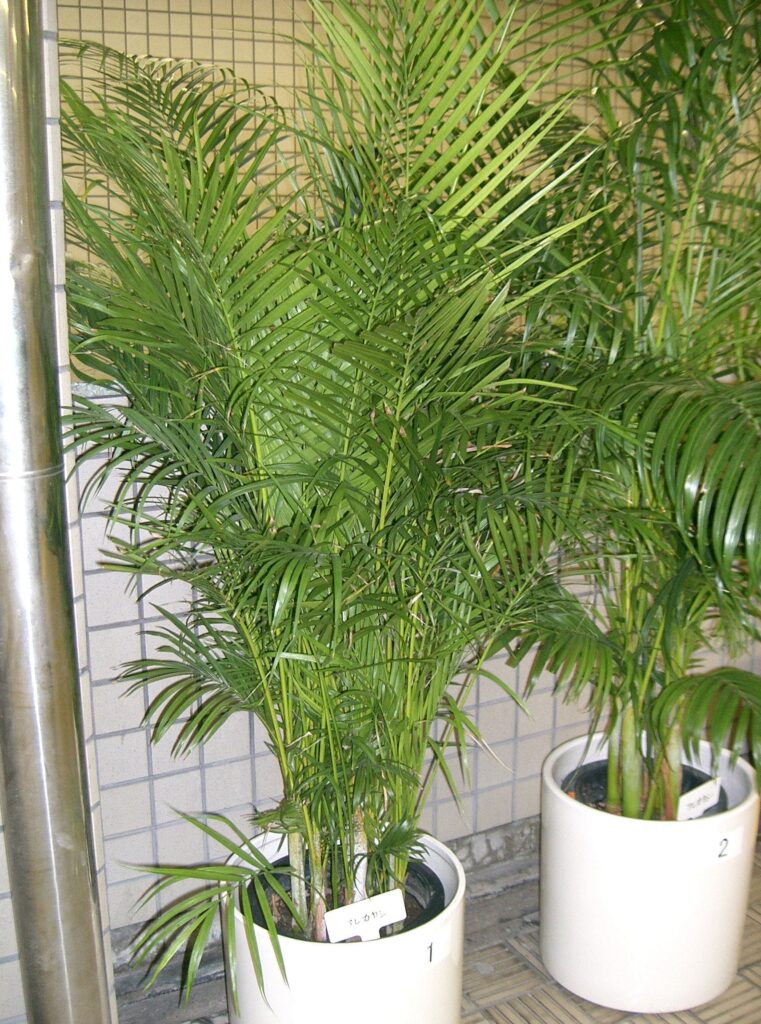

It eliminates formaldehyde, xylene, toluene, carbon monoxide benzene, and many more compounds from the air.
English Ivy
Not seen widely in Indian homes yet, this plant lends a classic appeal to your home.
There are many varieties of this plant but the most classic feature is its star-shaped leaves and outgrowing tendrils that are impossible to miss.
This plant can be potted in a hanging basket and it forms beautiful vines that can even climb walls if given the right conditions.
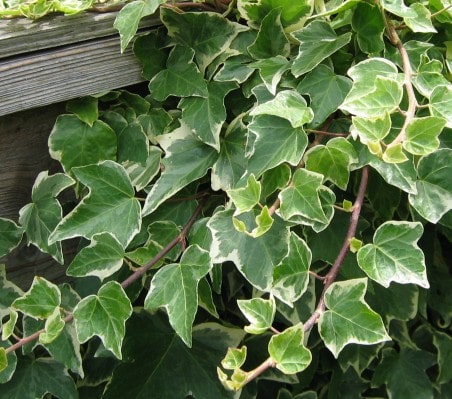

This plant eliminates benzene, carbon monoxide, formaldehyde, trichloroethylene from the air.
Rubber Plant
Seen growing widely in India, this large-leafed plant needs no introduction.
This plant can easily adapt to indoor conditions provided it gets enough indirect bright light and is potted in well-draining soil.
Before they bloom, new leaves form a bright red color bud that adds an interesting look to the plant.
The only care these plants need is regular wiping of their dark green leaves that start showing dust accumulation quite easily.
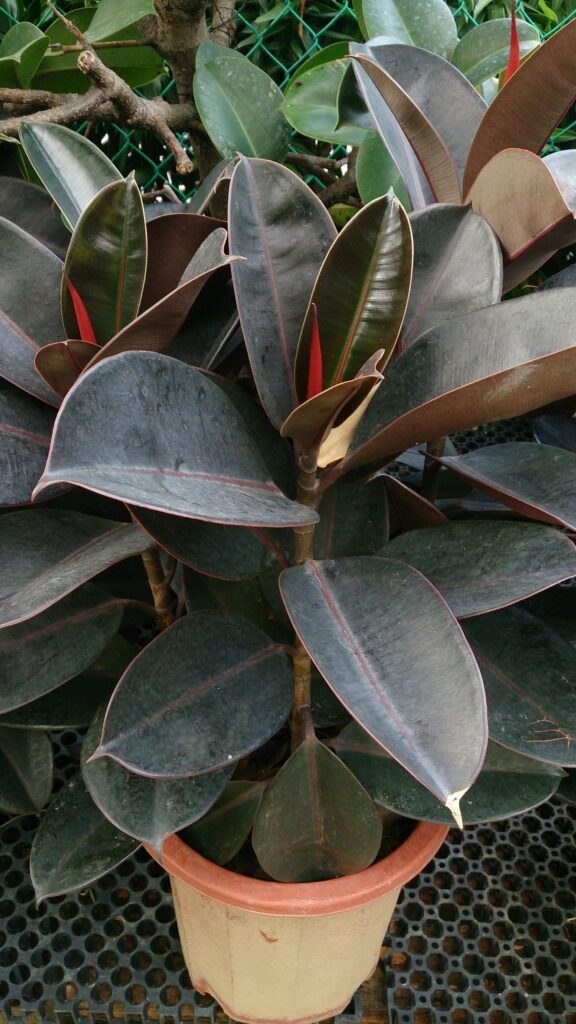

This plant filters benzene, trichloroethylene, formaldehyde, and many other compounds from the air.
Chinese Evergreen
These are evergreen ornamental plants that need a little extra care.
However, once they adapt to the conditions, they’ll stay with you for many years as they are slow-growing plants.
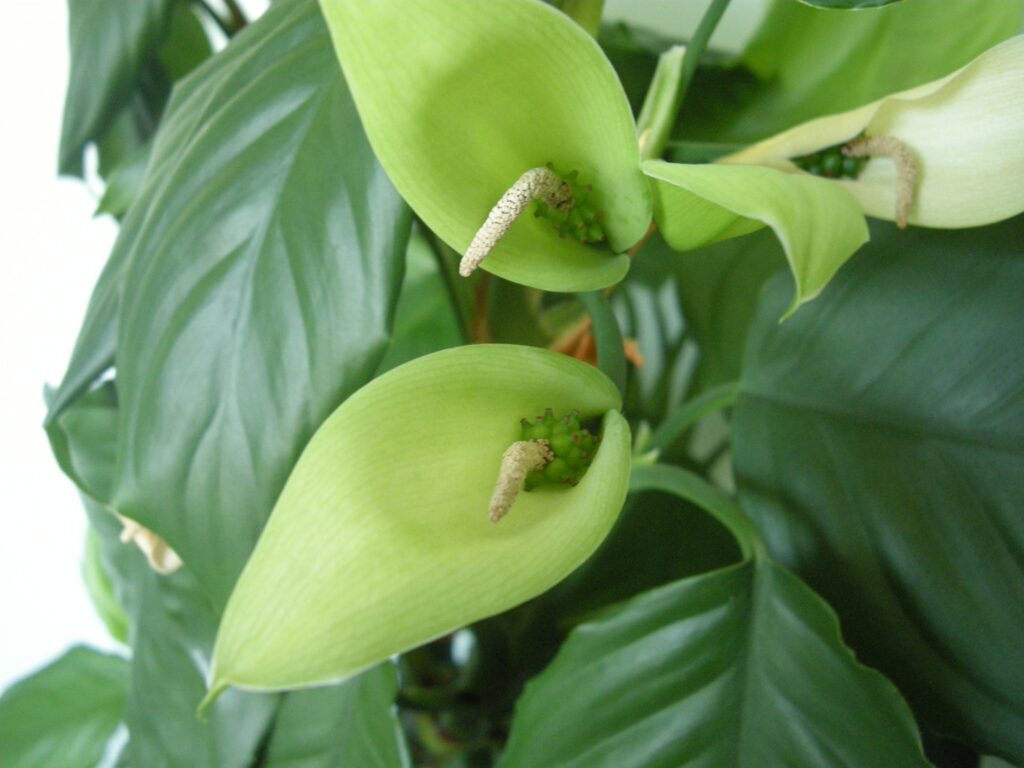

Pot them in a small planter and you will not need to re-pot them for years. The only thing to pay attention to is the amount of light and humidity that this plant is receiving.
The more variegated the variety, the more light it will need and the darker varieties can stand very low light conditions. Since this plant loves humidity and warmth, it is advised to keep it away from direct drafts of air and mist regularly in dry seasons.
This plant filters out benzene, dichloroethylene, and formaldehyde from the indoor air.
Contents
